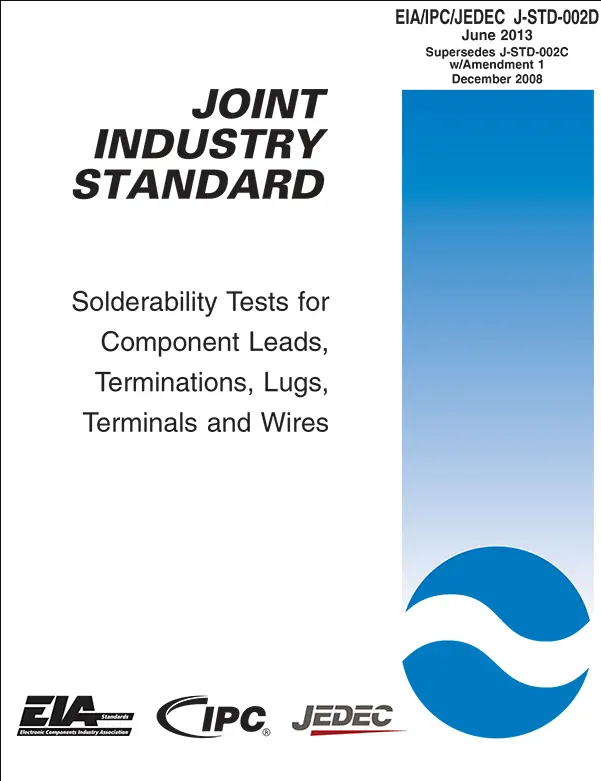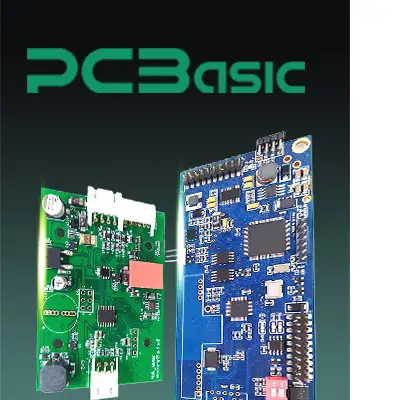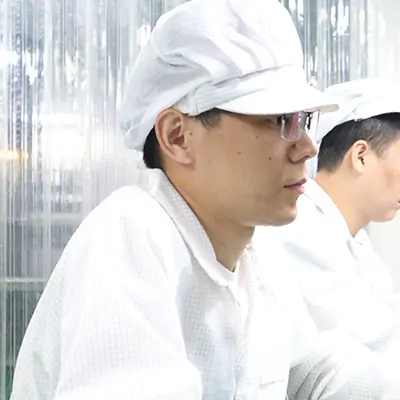

Global high-mix volume high-speed PCBA manufacturer
9:00 -18:00, Mon. - Fri. (GMT+8)
9:00 -12:00, Sat. (GMT+8)
(Except Chinese public holidays)


Global high-mix volume high-speed PCBA manufacturer
9:00 -18:00, Mon. - Fri. (GMT+8)
9:00 -12:00, Sat. (GMT+8)
(Except Chinese public holidays)
HomePage > Blog > Knowledge Base > J-STD-002 – The Standard for Solderability Testing
Solder joints are often regarded as the "lifeline" of printed circuit boards (PCBs). If there is a problem or defect in a certain solder joint, it may lead to the failure of the entire system, resulting in equipment failure, expensive rework or recall. It may also bring serious safety hazards in key fields such as aerospace, automotive and medical equipment. This is why solderability testing has become a necessary part of today's quality management. Meanwhile, a series of standards for testing soldering performance has emerged in the industry. J-STD-002 is one of the most commonly used solderability testing standards in the electronics industry.
As electronic products become smaller, have more complex functions, and are increasingly used for critical tasks, the role of J-STD-002 has become even more important. In this article, we will introduce in detail the function, application scope, main solderability testing methods and qualification determination criteria of J-STD-002, and make a comparison with J-STD-003, helping you fully understand the core value of this industry standard in electronic manufacturing.
J-STD-002 is an industry standard that regulates how manufacturers evaluate the solderability of electronic components. Jointly developed by IPC and JEDEC, J-STD-002 provides a unified method to ensure that parts such as terminations, leads, and solder balls can be fully wetted and firmly adhered by solder during PCB assembly. Unlike some general inspection methods, J-STD-002 stipulates strict and detailed procedures. Moreover, J-STD-002 focuses on whether it can be soldered rather than whether the solder joint can work for a long time. Confirming that components have good solderability before entering production helps reduce the defect rate and rework risk, and is one of the most commonly used solderability testing standards.
At present, J-STD-002 has been widely applied in multiple industries, such as aerospace, automotive, medical devices and consumer electronics. While ensuring product quality, it also enhances user experience and guarantees user safety.
In short, J-STD-002 is not merely a compliance standard; it is an important cornerstone of reliability engineering for electronic products, helping manufacturers truly transform excellent designs into stable and reliable actual performance.

The application of the J-STD-002 standard is very wide, covering almost all common types of electronic components.
The leads of through-hole components need to be inserted into the holes drilled on the PCB and then fixed with solder. J-STD-002 defines solderability tests for through-hole leads to ensure that solder can smoothly flow into the hole and wrap around the leads, thereby forming a strong mechanical and electrical connection.
Due to the small size and tight spacing of SMD, any poor soldering can directly affect the performance of the circuit. J-STD-002 provides standard test methods for surface-mount terminations, ensuring that the terminal surface can be uniformly wetted by solder during processes such as reflow soldering, thus avoiding weak or cold solder joints.
The two leads of the axial components are at both ends of the device, while the radial components have leads out from the bottom. Through the solderability testing methods defined in J-STD-002, it can be verified whether the surfaces of these leads are clean and free of oxidation, and ensure that the solder can be fully covered to avoid poor contact.
BGA is a typical representative of a high-density package, which is connected to the PCB by hundreds or even thousands of solder balls at the bottom. If the wettability of the solder balls is insufficient, hidden weak solder joints may occur. These defects are difficult to detect visually and are extremely hard to repair. J-STD-002 has developed a specific testing method for BGA solder balls to ensure that they can be firmly attached during reflow soldering, thereby avoiding potential reliability issues.
J-STD-002 defines multiple solderability testing methods, and each method has different application scenarios:
This method is the most common form of solderability testing. During the test, the leads or terminals of the components are directly dipped into the molten solder, then removed and visually inspected for the wetting condition of the surface solder. Because of its simple operation, low cost and high efficiency, this method is widely used in soldering testing in mass production.
The wetting balance test is a more precise method for solderability testing. We can immerse the terminals of the components in the molten solder and measure the variation curve of the wetting force over time in real time. This method does not merely rely on visual observation but can provide specific quantitative results, thus enabling a more scientific assessment of the wettability of leads or terminals.
For BGA solder balls and CSP packages, J-STD-002 also defines specific reflow test methods. During the testing process, the solder balls at the bottom of the BGA are heated and reflowed to observe their wetting and adhesion behaviors. Through this test, it can effectively ensure that the BGA solder balls are firmly and reliably attached during PCB assembly.
Overall, these methods complement each other, enabling the solderability testing conducted under the J-STD-002 standard to have both simple and efficient means, as well as precise quantification methods, and to cover the special requirements of advanced packaging, thereby ensuring the flexibility and comprehensiveness of the testing system.

Time is money in your projects – and PCBasic gets it. PCBasic is a PCB assembly company that delivers fast, flawless results every time. Our comprehensive PCB assembly services include expert engineering support at every step, ensuring top quality in every board. As a leading PCB assembly manufacturer, we provide a one-stop solution that streamlines your supply chain. Partner with our advanced PCB prototype factory for quick turnarounds and superior results you can trust.
The J-STD-002 standard has established strict acceptance criteria for solderability:
|
Criteria Item |
Requirement |
Explanation |
|
Solder Coverage |
≥ 95% |
At least 95% of the tested surface must be uniformly wetted with solder to be considered acceptable. |
|
Non-wetting |
Not allowed |
Solder fails to adhere to the lead or termination surface; considered a critical defect. |
|
De-wetting |
Not allowed |
Solder initially covers the surface but then recedes, leaving exposed areas; unacceptable. |
|
Voids / Pinholes |
Not allowed |
Small holes or bubbles appear on the wetted surface, reducing joint reliability. |
|
Contamination |
Not allowed |
Presence of oxides, oils, or foreign materials that prevent proper wetting. |
|
Application Scope |
Varies by component type |
Different requirements apply to through-hole leads, SMD terminations, and BGA spheres. |
These strict standards ensure that only components with good solderability will enter the subsequent assembly process, thereby minimizing failure problems in production to the greatest extent.
J-STD-003 is a solderability testing standard specifically for printed circuit boards. It is mainly used to confirm whether the pads and surface finish of the PCB (such as HASL, ENIG, OSP, tin immersion, silver immersion, etc.) have good solderability. Even if the components themselves are qualified, if the PCB pads are oxidized or contaminated, it will still cause soldering defects. J-STD-003 ensures that the PCB surface can be fully wetted by solder and firmly bonded through a unified testing method, thereby guaranteeing the reliable assembly of subsequent components.
|
Standard |
Test Object |
Focus |
|
J-STD-002 |
Component terminations (leads, pads, spheres) |
Verifies if components can be reliably soldered; ensures component solderability |
|
J-STD-003 |
PCB surfaces and finishes |
Checks if PCB pads and coatings provide good wetting; ensures PCB solderability |
In simple terms, J-STD-002 focuses on component terminations, while J-STD-003 focuses on PCB surfaces. Only by using the two in combination can the reliability of soldering be fully guaranteed.
J-STD-002 is the core standard for solderability testing in electronics manufacturing. It ensures that every termination forms a firm and reliable solder joint through a unified component soldering testing method. When used in conjunction with J-STD-003, it can not only verify the quality of component termination, but also ensure that the PCB surface meets the highest solderability requirements.
For manufacturers, adhering to J-STD-002 is not only about meeting compliance requirements but also an important means to avoid malfunctions, protect brand reputation, and deliver durable electronic products. In today's industry environment, where reliability is critical, J-STD-002 has become a trusted benchmark.

Assembly Enquiry
Instant Quote
Phone contact

+86-755-27218592
In addition, we've prepared a Help Center. We recommend checking it before reaching out, as your question and its answer may already be clearly explained there.
Wechat Support

In addition, we've prepared a Help Center. We recommend checking it before reaching out, as your question and its answer may already be clearly explained there.
WhatsApp Support

In addition, we've prepared a Help Center. We recommend checking it before reaching out, as your question and its answer may already be clearly explained there.
